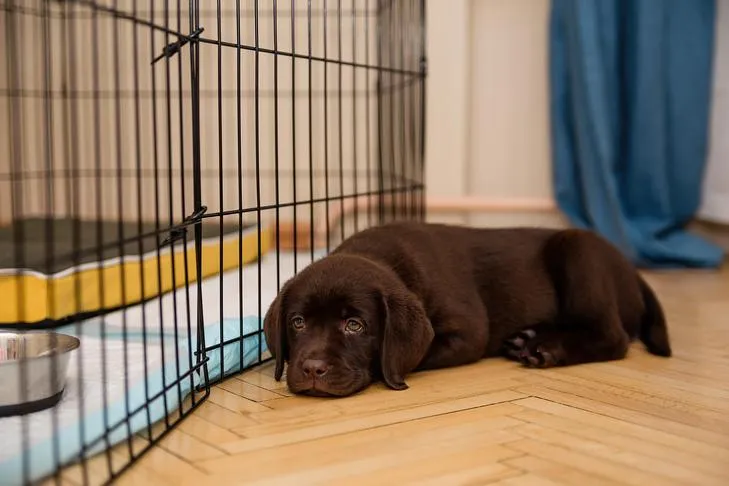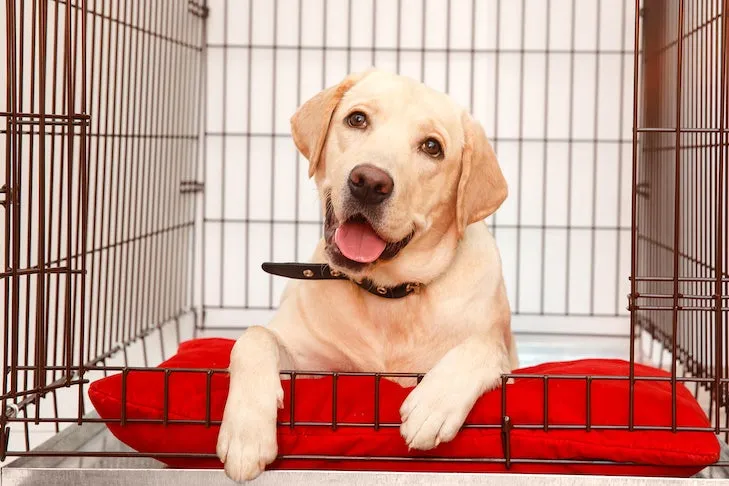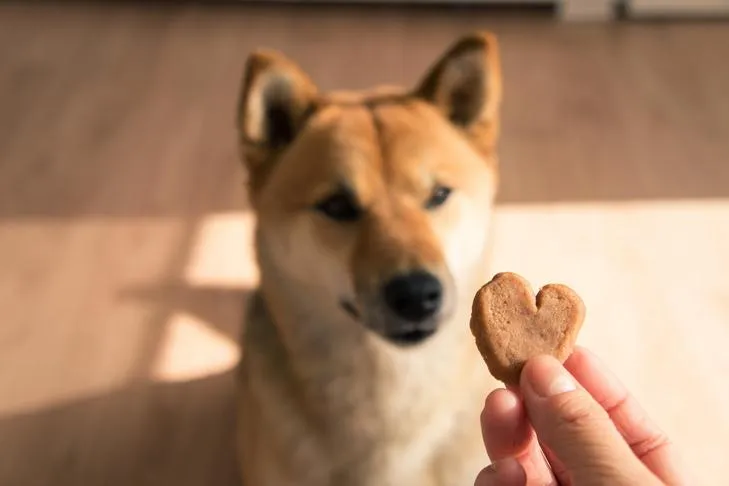Bringing a new puppy home fills life with joy, but the task of potty training often introduces challenges that can test any owner’s patience. Among the most common questions from new pet parents is how to effectively potty train a puppy. While the ultimate goal is typically for your dog to relieve themselves outdoors, puppy pads can serve as an invaluable tool in a successful housetraining journey for specific situations. For instance, very young puppies require frequent potty breaks, which can be difficult for elderly owners or those living in apartments without easy outdoor access. Additionally, if your puppy isn’t fully vaccinated, using an indoor potty area can limit their exposure to public spaces until they are ready. This guide will walk you through the essential steps on How To Puppy Pad Train A Dog, helping you establish good habits early on.
Successful dog training, including housetraining, requires consistency and positive reinforcement, much like teaching your puppy other commands. If you’re also working on basic obedience, understanding principles like positive reinforcement can greatly assist with training your puppy to come when called, making overall management easier.
Be Patient During Puppy Pad Training
It’s natural to feel frustrated when puppy pad training seems to take longer than anticipated. However, patience is paramount during this process. Potty training requires time and understanding of your puppy’s limitations. It’s crucial not to expect more from your puppy than they are physically capable of delivering. Keeping these points in mind can help you maintain a calm and effective approach:
- Pad Choice: Decide whether you’ll use disposable puppy pads or washable, reusable options.
- Indoor Potty Stations: Consider supplementing pads with an indoor “litterbox-type” dog potty station.
- Bladder Control Development: Puppies typically cannot fully control their bladder until they are around 16 weeks old. Therefore, frequent accidents are a normal part of development.
- Holding Capacity: A general rule of thumb is that a puppy can only hold their bladder for approximately their age in months plus one hour. For example, a 4-month-old puppy can hold it for about five hours, including overnight.
- Breed Differences: Metabolism and bladder size vary between breeds. Toy breeds, for instance, may need more frequent potty breaks due to their faster metabolism and smaller bladders.
- Individual Variation: Every puppy is unique, even within the same breed. One puppy might grasp pad training in a few weeks, while another might need several months.
 A content Labrador Retriever puppy relaxing comfortably in a home setting near its open kennel.
A content Labrador Retriever puppy relaxing comfortably in a home setting near its open kennel.
Constant Supervision is Key
Supervising your puppy at all times is not only essential for their safety but also critical for successful puppy pad training. If you’re not actively observing your dog, you can’t effectively prevent accidents or catch them in the act to redirect them. Implement these strategies to maintain effective supervision:
- Frequent Pad Trips: Take your puppy to their designated potty pad or indoor bathroom area very often. The frequency depends on their age and bladder strength; for very young puppies, this could be as frequent as every 15 minutes. It’s always better to make a “wasted” trip than to clean up an accident.
- Set a Timer: If you find it challenging to remember when to take your puppy to their pad, set a timer to prompt you.
- Recognize Potty Signs: Watch for telltale signs that your puppy needs to go, such as sniffing the ground, circling, or whining. When you observe these behaviors, immediately take them to the potty pad.
- Use a Leash: If your puppy tends to wander out of sight, using a leash can help keep them close. Clipping the leash to your waist can limit their movements and ensure constant supervision. This also reinforces good leash manners, which is vital when you train puppy to come and stay in outdoor environments.
- Crate When Unsupervised: Whenever you cannot actively supervise your puppy, place them in a crate or a designated safe, puppy-proofed area.
Utilize a Crate Effectively
A crate is an incredibly valuable tool in puppy pad training because dogs instinctively avoid soiling their sleeping area. Furthermore, if introduced properly, your puppy’s strong denning instinct will lead them to view their crate as a safe, comfortable space rather than a punishment. Keep these points in mind when using a crate for your puppy:
- Appropriate Size: Choose a crate that is just large enough for your puppy to stand up, lie down, and turn around comfortably, with no extra room. A crate that is too large allows your puppy to use one end as a toilet, which will hinder pad training progress.
- Crate Dividers: If you purchase a crate sized for your dog’s adult size, use dividers to adjust the internal space, allowing the crate to “grow” with your puppy.
- Positive Association: Fill the crate with positive experiences. Place treats in the crate, feed your puppy meals at the back of the crate, and leave engaging, food-stuffed chew toys inside. This helps your puppy develop a positive association with their crate.
- Reward Crate Entry: Reward your puppy with praise and treats whenever they willingly enter their crate. This makes the crate a desirable place to be. While a crate is excellent for quiet time, never use it as a form of punishment.
- Immediate Potty Break: Always take your puppy directly to their potty pad immediately after letting them out of their crate. Their bladder will likely be full after holding it in their crate.
 A Labrador Retriever puppy lying calmly inside its open wire crate, looking towards the camera.
A Labrador Retriever puppy lying calmly inside its open wire crate, looking towards the camera.
Maintain Consistency with a Schedule
Consistency and a well-structured routine are vital elements of how to puppy pad train a dog successfully. Establishing a predictable schedule and adhering to it rigorously will significantly reduce accidents and maximize your puppy’s opportunities to relieve themselves in the correct location. Use these tips to ensure a consistent approach:
- Anticipate Potty Times: Learn your puppy’s natural potty schedule. Most puppies need to go after waking up in the morning, following meals, after playing sessions, and immediately after napping. Take your puppy to the potty pad every time one of these events occurs.
- Regular Pad Visits: Even if no specific event has triggered a need, take your puppy to the potty pad every hour or two.
- Unsuccessful Trips: If you take your puppy to the pad and they don’t go, do not immediately let them run off to play. Instead, return them to their crate for 10-15 minutes, then try again. Repeat this cycle until they successfully do their business on the pad.
- Scheduled Feeding: Control your puppy’s meal times by feeding them on a consistent schedule rather than “free-feeding.” This allows you to better predict when they will need to go to the bathroom.
- Fixed Pad Location: Choose a specific, appropriate spot for the potty pad and try not to move it during the training period. Moving the pad frequently can confuse your puppy and lead to more accidents, prolonging the training process. When focusing on obedience, having a predictable routine can also help with how to train your puppy to come back to you, as they learn to expect your commands at certain times or in certain contexts.
Reward Good Behavior Immediately
Dogs are more likely to repeat behaviors that are rewarded, and successfully using the potty pad is no exception. Whenever your puppy uses their potty pad correctly, immediately praise them enthusiastically and offer a treat. This positive reinforcement reinforces the desired behavior and encourages them to use the pad again. Consider these points when rewarding your puppy:
- Instant Gratification: Reward your puppy the instant they finish their business on the pad. Do not delay by retrieving treats from another room. Have treats readily available beside the potty area so you can reward them immediately.
- Use a Leash for Focus: If your puppy is easily distracted, walk them to the potty pad on a leash. Keep them on the leash until they have completed their business. The freedom to then play unclipped can serve as an additional, natural reward. Consistent positive reinforcement, as seen in rewarding pad use, is also critical for teaching more complex commands such as how to teach puppy to come and stay.
 A cute Shiba Inu puppy attentively watching a heart-shaped treat held by a person's fingers.
A cute Shiba Inu puppy attentively watching a heart-shaped treat held by a person's fingers.
Transitioning from Pads to Outdoors
Once your puppy consistently uses their pads, it’s time to transition them to relieving themselves outdoors. Many of the principles used for pad training apply similarly to outdoor training. Simply direct your puppy outside rather than to their pad. These tips will help facilitate a smooth transition:
- Teach a Potty Cue: Introduce a specific potty cue, such as “hurry up” or “go potty.” Start using this cue just as your puppy is about to go, and reward them immediately afterward. With consistent repetition, your puppy will learn to associate the cue with eliminating, allowing you to prompt them to go where and when it’s convenient for you.
- Gradual Pad Relocation: Begin by moving the potty pad a small distance each day. First, move it closer to the door that leads outside, then just outside that door, and gradually move it further into your chosen outdoor potty spot. This slow transition helps prevent confusion.
- Decrease Pad Size: Once the pad is outdoors, you can start decreasing its size. Cut the pad into smaller and smaller pieces until your puppy is accustomed to using the ground directly. This method can be particularly helpful if your puppy struggles with the transition, especially when combined with a reliable potty cue.
Handle Accidents Calmly and Effectively
It is human nature to focus on mistakes, but with puppies, the opposite approach is far more effective: always reward good behavior and calmly address accidents. This is especially true during puppy pad training. Here are some guidelines for handling potty accidents:
- Interrupt, Don’t Startle: If you catch your puppy in the act of having an accident, interrupt them gently. A quiet hand clap or a soft “oh-oh” should be enough to stop them mid-stream without scaring them. Punishing them during the act will only teach them to hide their elimination from you, leading to a dog who might sneak behind furniture to go in private.
- Redirection: Immediately take your puppy to their potty pad as soon as you interrupt an accident. If they stopped mid-stream, they might finish on the pad. Even if they don’t, you’ve shown them the correct location.
- No Post-Accident Reaction: If you discover an accident after it has already happened, do not react. Lecturing or scolding your puppy afterward will not teach them anything about potty training; they won’t associate your anger with an event that occurred minutes or hours ago.
- Thorough Cleaning: Always clean accidents using an odor-destroying cleaner. Dogs are attracted to the scent of previous eliminations, so proper and thorough cleaning is essential to prevent them from repeatedly using the same spot.
With consistent effort, patience, and positive reinforcement, successfully teaching your dog how to puppy pad train a dog is an achievable goal. By following these guidelines, you’ll establish positive habits that benefit both you and your furry companion, setting them up for a lifetime of good behavior and a strong bond.
